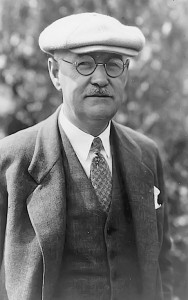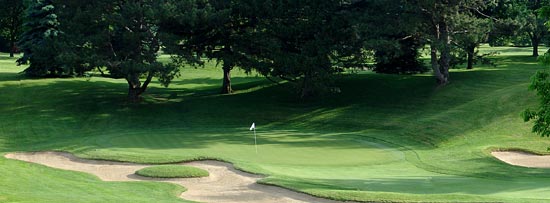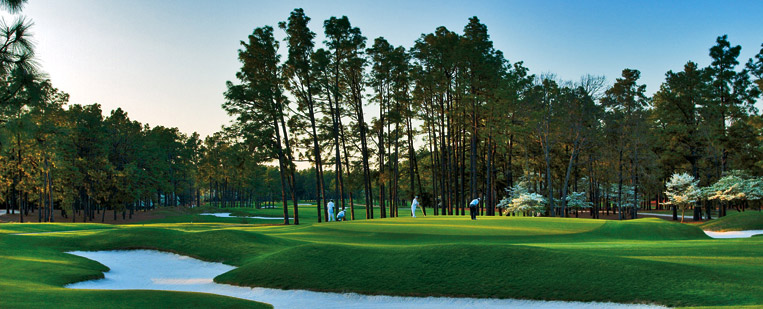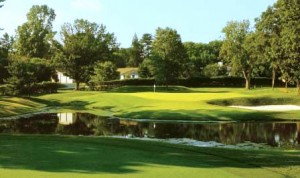 Mention the name Donald Ross to an educated golfer and it will surely bring good thoughts to mind. That is because Ross, in the words of Jack Nicklaus, designed golf courses that led to positive thinking. “His stamp as an architect was naturalness,” Nicklaus said. He was, and still is, considered the Michelangelo of golf.
Mention the name Donald Ross to an educated golfer and it will surely bring good thoughts to mind. That is because Ross, in the words of Jack Nicklaus, designed golf courses that led to positive thinking. “His stamp as an architect was naturalness,” Nicklaus said. He was, and still is, considered the Michelangelo of golf.
Donald James Ross (November 23, 1872 – April 26, 1948) was arguably the most influential golf course designer in the history of the sport. He was born in Dornoch, Scotland, but became a citizen of and spent most of his adult life in the United States. He was involved in designing or redesigning around 600 courses from 1900–1948, laying the foundation for America’s golf industry.
Ross served an apprenticeship with Old Tom Morris in St Andrews before investing his life savings in a trip to the U.S. in 1899 at the suggestion of a Harvard professor named Robert Wilson, who found him his first job in the America at Oakley Country Club in Watertown, Massachusetts. In 1900 he was appointed as the golf professional at the Pinehurst Resort in North Carolina, where he began his course design career and eventually designed four courses. He had a successful playing career, winning three North and South Opens (1903, 1905, 1906) and two Massachusetts Opens (1905, 1911), and finishing fifth in the 1903 U.S. Open and eighth in the 1910 British Open. As his fame grew, he began to teach and play less and to focus on golf course design, running a substantial practice with summer offices in Little Compton, Rhode Island. At its height, Donald J. Ross and Associates, as his practice was known, oversaw the work of thousands of people. However, Ross always kept up his professional golf standing. His brother Alec won the 1907 U.S. Open.
Ross’s most famous designs are Pinehurst No. 2, Aronimink Golf Club, Seminole Golf Club, Oak Hill and Oakland Hills. Some of his early work was in Virginia and includes Jefferson Lakeside Country Club. He displayed great attention to detail. Often he created challenging courses with very little earth moving; according to Jack Nicklaus, “His stamp as an architect was naturalness.” His most widely known trademark is the crowned or “turtleback” green, most famously seen on Pinehurst No. 2, though golf architecture writer Ron Whitten argued in Golf Digest in 2005 that the effect had become exaggerated compared to Ross’s intention because greenkeeping practices at Pinehurst had raised the centre of the greens. Ross also designed one of Westchester, N.Y.’s best courses, Whippoorwill Country Club, in Armonk, NY.
Ross often created holes which invited run-up shots but had severe trouble at the back of the green, typically in the form of fallaway slopes. In the 1930s he revolutionized greenskeeping practices in the Southern United States when he oversaw the transition of the putting surfaces at Pinehurst No. 2 from oiled sand to Bermuda grass. Ross also designed the course at Sedgefield Country Club in Greensboro, North Carolina which is home to the PGA Tour’s Wyndham Championship. Currently, Sedgefield Country Club is the only regular Donald Ross design on the PGA Tour. Aronimink Golf Club, located in Newtown Square, Pennsylvania, played host to the AT&T National in 2010 and will do so again in 2011.
Ross was a founding member and first president of the American Society of Golf Course Architects, which was formed at Pinehurst in 1947. He was admitted to the World Golf Hall of Fame in 1977, a high honor rarely awarded for anything other than playing success. Ross is unmatched in the quantity and quality of courses he completed Alister Mackenzie. and A.W. Tillinghast come in close after Ross on the list of well known architects of the early 20th century. Ross died while completing his final design at Raleigh Country Club in North Carolina
Related posts
Golf Architects/Designers: Wilfrid Reid
on Tuesday 5, AugustWilfrid Ewart “Wilfie” Reid (3 November 1884 – 24 November 1973) was an English...
Golf Architects/Designers: Robert Trent Jones, Sr.
on Friday 9, JulyRobert Trent Jones, Sr. was born in 1906 in Ince, England, a town on...
Mission Hills Golf Club, China (Part 3)
on Tuesday 11, JanuaryMission Hills Golf Club has announced its recent recognition as the “World’s Largest Golf...


